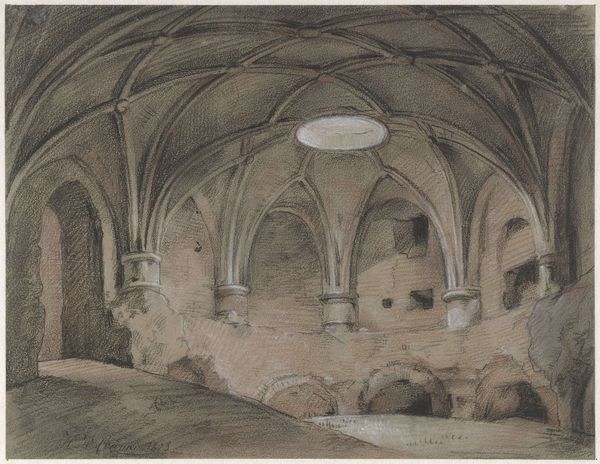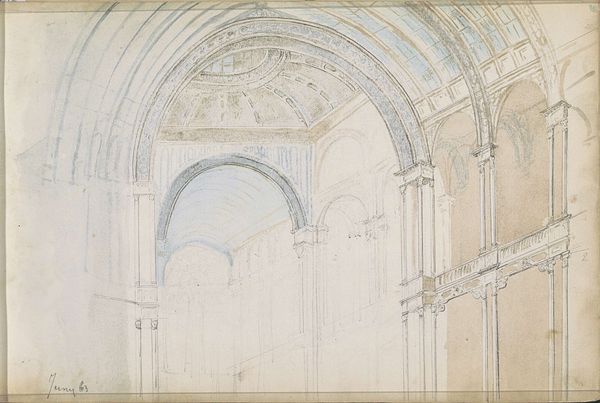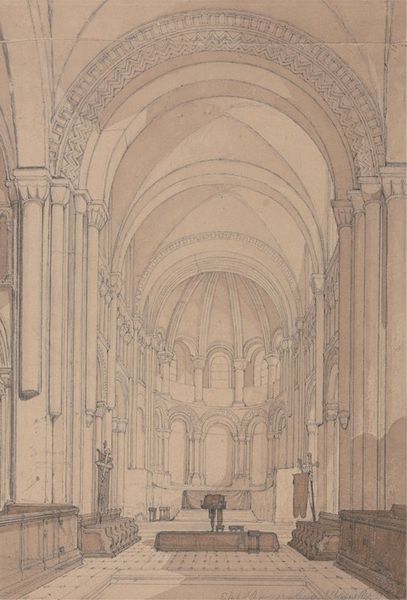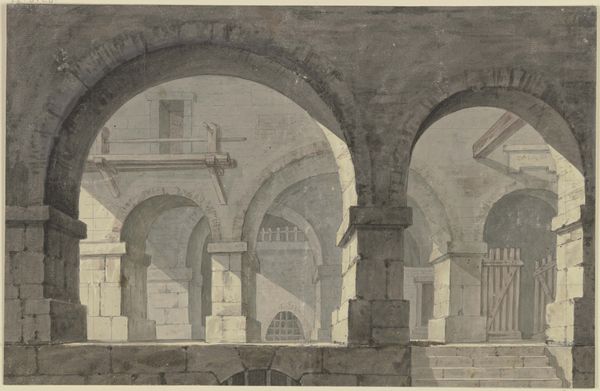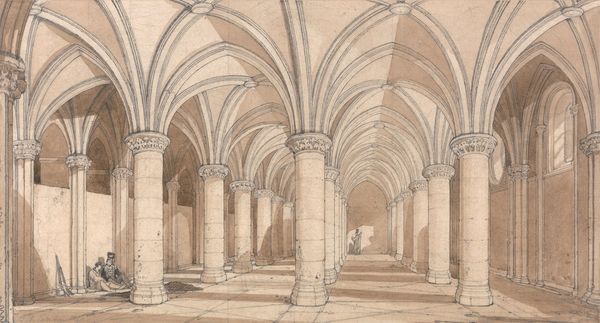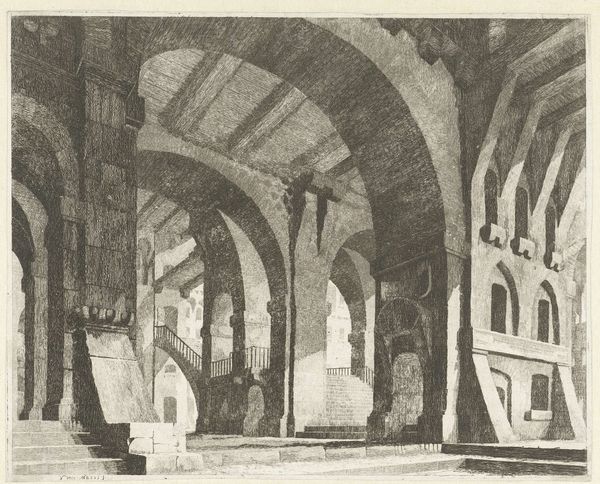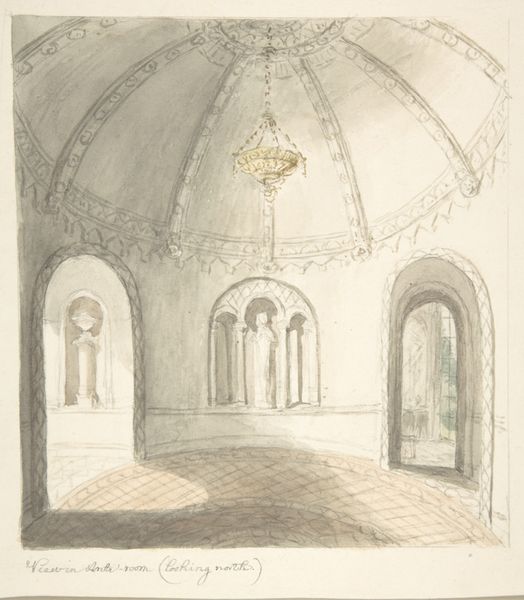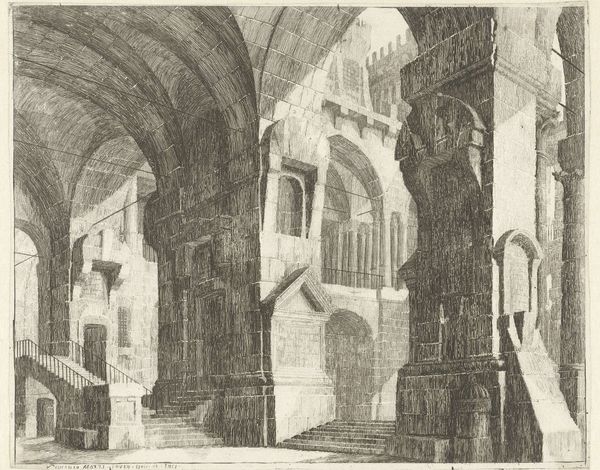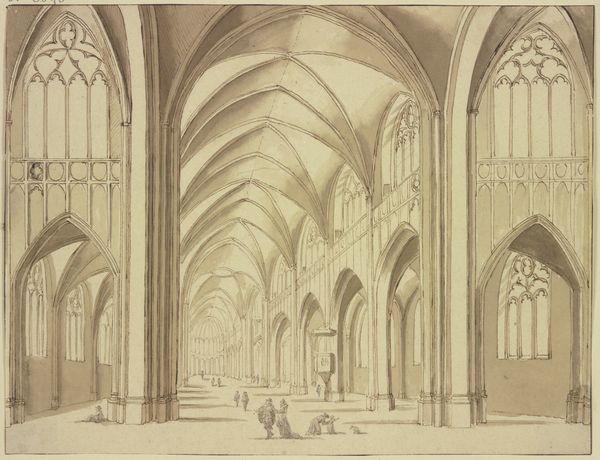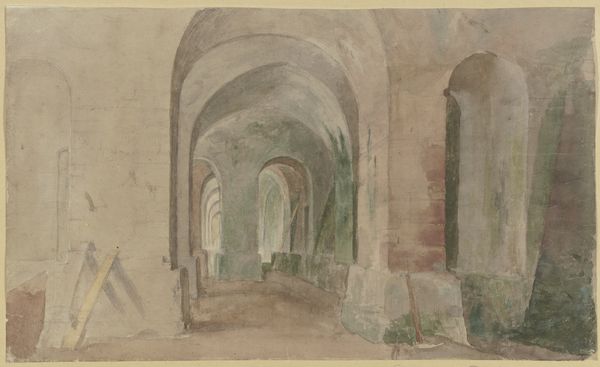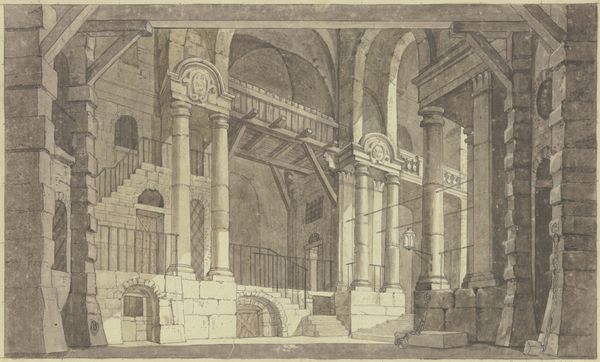
drawing, paper, pen, architecture
#
drawing
#
paper
#
romanticism
#
pen
#
architecture
Copyright: Public Domain: Artvee
Curator: This lovely pen and wash drawing by John Sell Cotman is entitled, "Interior of the Chapel of Saint Julien, near Rouen, Normandy," and it dates to around 1818. Editor: It feels so incredibly quiet in here. All of those repeating arches, the spareness of it all... It's like a hushed echo chamber for the soul, don’t you think? Curator: It does possess a powerful serenity. Cotman's use of line is exquisite, almost architectural in its precision. He captures the solidity and the weight of the structure. Editor: The bareness intrigues me. A stripped-back church can carry powerful political implications: during the French Revolution, such buildings were repurposed, their original functions contested, and their grandeur mocked or deliberately destroyed as symbols of a decaying, tyrannical past. Curator: Indeed. Consider also the context of Romanticism; the chapel's condition also evokes the fascination with ruins and the passage of time. The slightly tilted perspective adds to this sensibility too. The light filters in to create drama and a slightly off-kilter spirituality. Editor: And a gendered space of religion and national identity formation too—the space in Cotman's depiction is noticeably unpopulated and defamiliarized through its sparseness, lending an unreadable silence or melancholy for the church, as an architectural idea as much as the church, the social and political institution, itself. Curator: But I find the real beauty in his economical approach, the minimal wash giving the sense of atmosphere, like a memory more than a photorealistic rendition. It is a poignant snapshot of a place loaded with history. Editor: A fascinating testament to a time of shifting beliefs and architectural reimagining—not just bricks and mortar, but loaded symbols and spaces transformed by human desires and ideological tensions. The work captures an eerie transience in what would once be seen as everlasting. Curator: The building’s solemn permanence and yet its inevitable change. It’s enough to inspire some artistic ruminations of one’s own. Editor: Right? Art is as much about questioning as beholding, I feel.
Comments
No comments
Be the first to comment and join the conversation on the ultimate creative platform.
